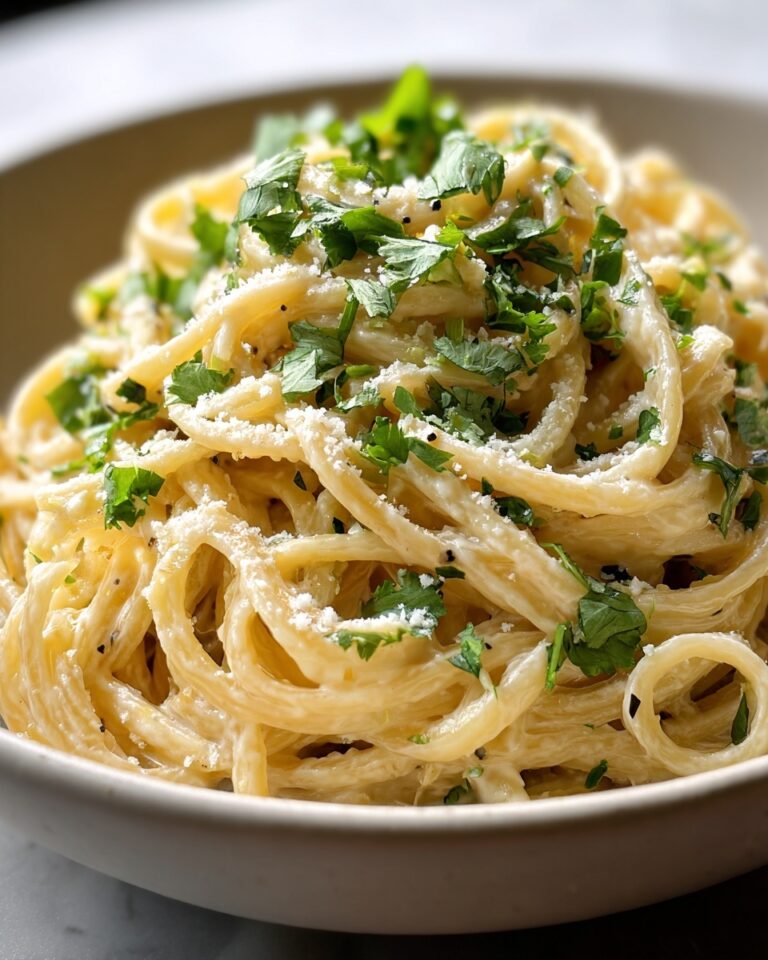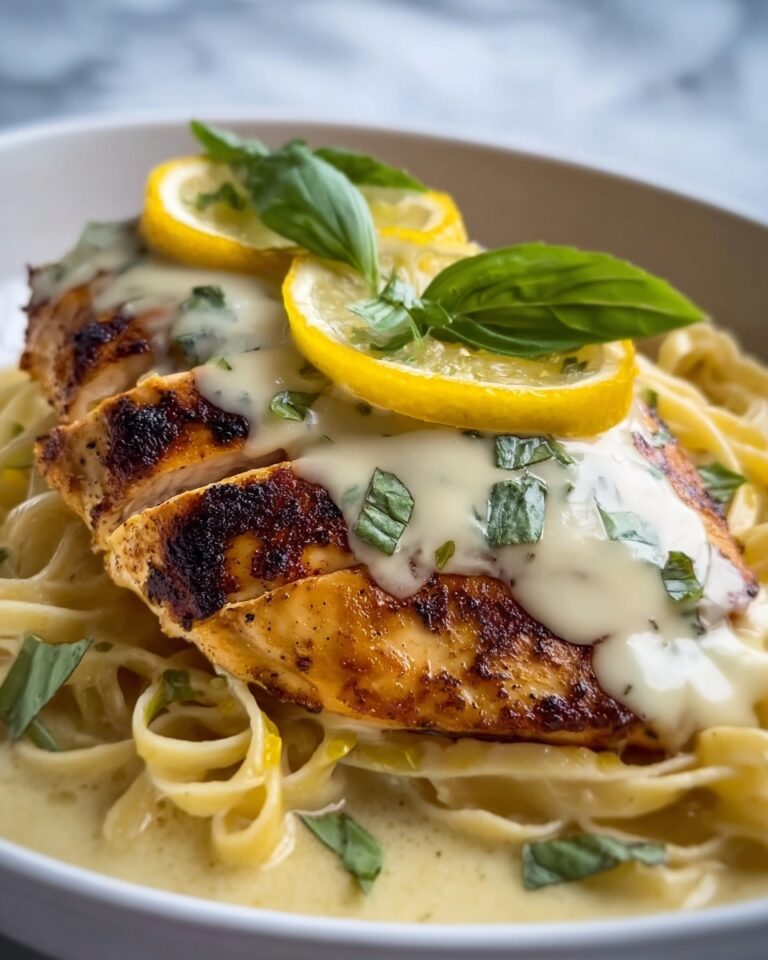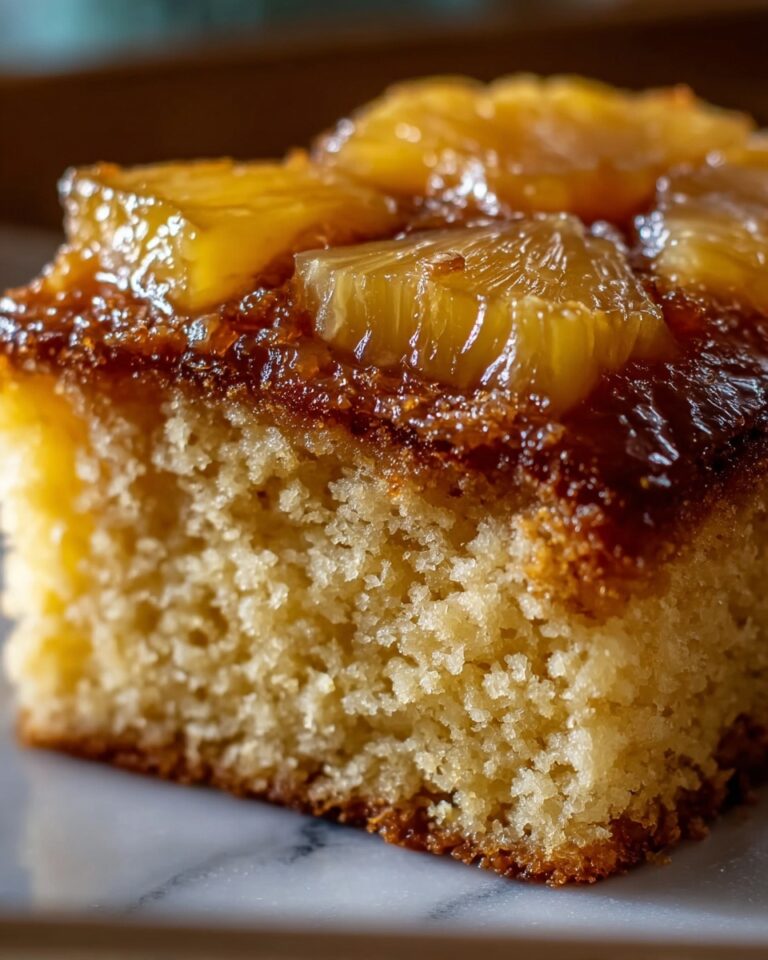If you have ever dreamed of crafting the perfect tomato sauce to elevate your pasta, pizza, or any Italian-inspired dish, you are in for a treat with this Best Marinara Sauce Yet Recipe. It’s a vibrant, deeply flavorful, and easy-to-make sauce that bursts with the fresh, classic tastes of Italy. Each spoonful brings together garlic, rich tomatoes, and herbs in perfect harmony. Whether you’re a newbie or a seasoned cook, this recipe feels like a warm hug from an Italian nonna, promising a sauce with irresistible aroma and taste every single time.
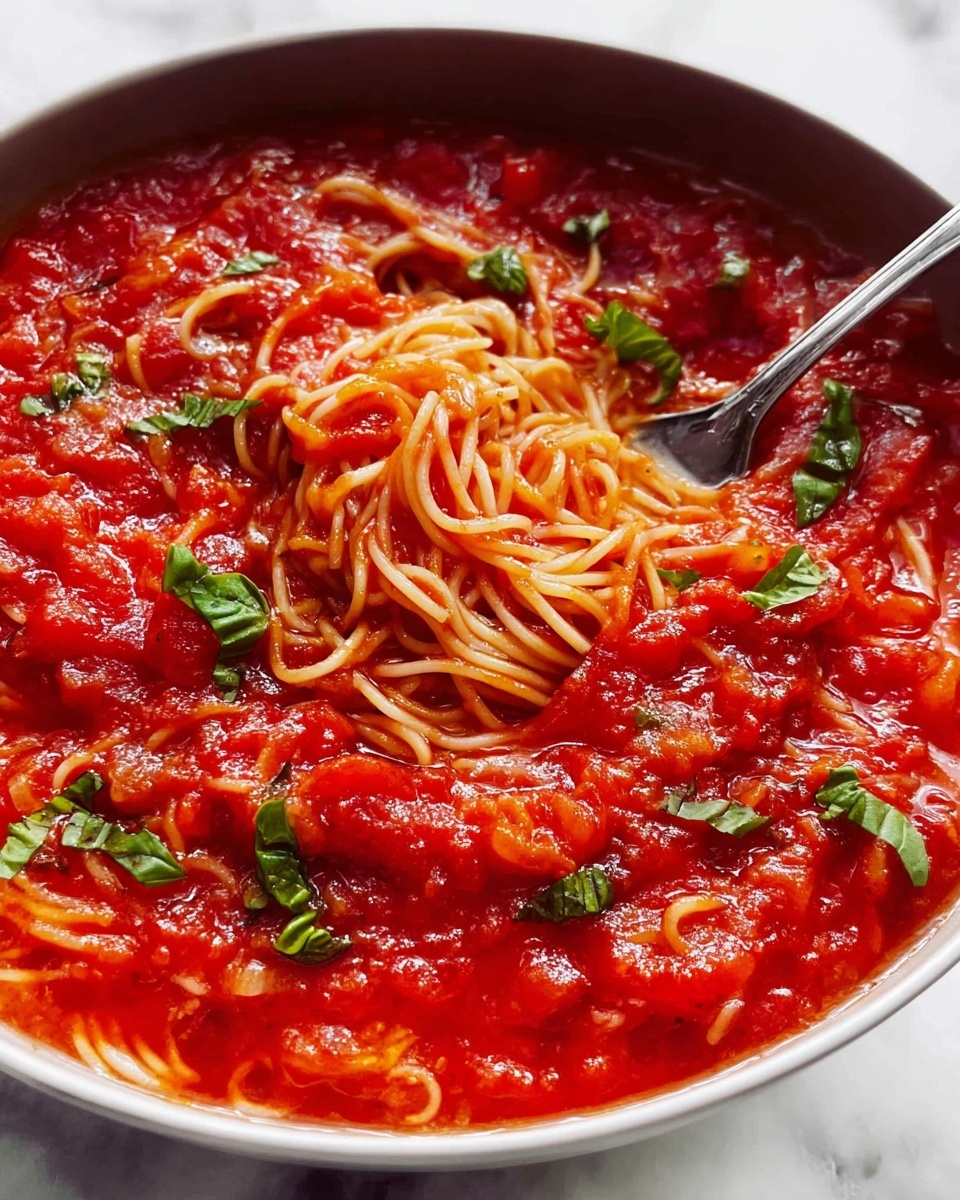
Ingredients You’ll Need
This sauce relies on a handful of simple but essential ingredients that truly make all the difference. Each component plays a key role: olive oil creates a smooth base, garlic and onion bring aromatic depth, while tomatoes and herbs build bold flavors and inviting color.
- 2 tbsp olive oil: Use a good quality extra virgin olive oil for a smooth, fruity foundation.
- 4 cloves garlic, minced: Fresh garlic infuses the sauce with its unmistakable, warm fragrance.
- 1 small onion, finely chopped: Adds subtle sweetness and body to balance the acidity.
- 1 can (28 oz / 800g) crushed tomatoes (San Marzano if possible): The heart of the sauce, San Marzano tomatoes offer natural sweetness and low acidity.
- 2 tbsp tomato paste: Intensifies the tomato flavor and deepens the sauce’s color.
- 1 tsp sugar: Cuts through the acidity for a smooth, harmonious taste.
- 1 tsp dried oregano: Brings an earthy, slightly peppery note that’s classic in marinara.
- 1/2 tsp dried basil: Adds a subtle herbal sweetness and aroma.
- 1/4 tsp chili flakes (optional): For a gentle kick that wakes up the palate.
- Black pepper to taste: Freshly ground gives a nice, peppery twang without overpowering.
- Fresh basil (optional, for finish): Stirred in at the end, it adds vibrant color and a garden-fresh flavor.
How to Make Best Marinara Sauce Yet Recipe
Step 1: Heat and Sauté Aromatics
Start by warming the olive oil in a pan over medium heat. Then, add the finely chopped onion and cook it gently for about 4 to 5 minutes until it becomes tender and translucent. This slow cooking softens the onion’s sharpness and develops a subtle sweetness that forms the flavor foundation.
Step 2: Infuse with Garlic
Next, stir in the minced garlic and cook it for around 1 minute until fragrant. Be careful not to brown the garlic—it should release its aroma without becoming bitter. This step layers the sauce with a warm, inviting essence that’s hard to resist.
Step 3: Deepen the Flavor with Tomato Paste
Adding the tomato paste now helps intensify the sauce’s richness. Cook it with the garlic and onion for 1 to 2 minutes. This mild caramelization process unlocks an umami-packed depth that makes all the difference.
Step 4: Pour in the Crushed Tomatoes
Once the base is ready, pour in the crushed tomatoes and stir well to combine everything evenly. Using high-quality San Marzano tomatoes here really shines through, lending a perfect balance of natural sweetness and acidity.
Step 5: Season and Simmer
Add the sugar, dried oregano, dried basil, chili flakes if you’re feeling adventurous, and a sprinkle of black pepper. Let the sauce simmer uncovered over medium-low heat for 20 to 30 minutes while stirring occasionally. This slow simmer thickens the sauce beautifully, allowing the flavors to meld and develop that quintessential marinara sauce character.
Step 6: Final Taste and Fresh Herb Finish
Before serving, taste the sauce and adjust the seasoning if needed—sometimes a little more salt or pepper makes all the difference. If you have fresh basil on hand, stir it in right at the very end to add a burst of color and freshness that elevates the entire dish.
How to Serve Best Marinara Sauce Yet Recipe
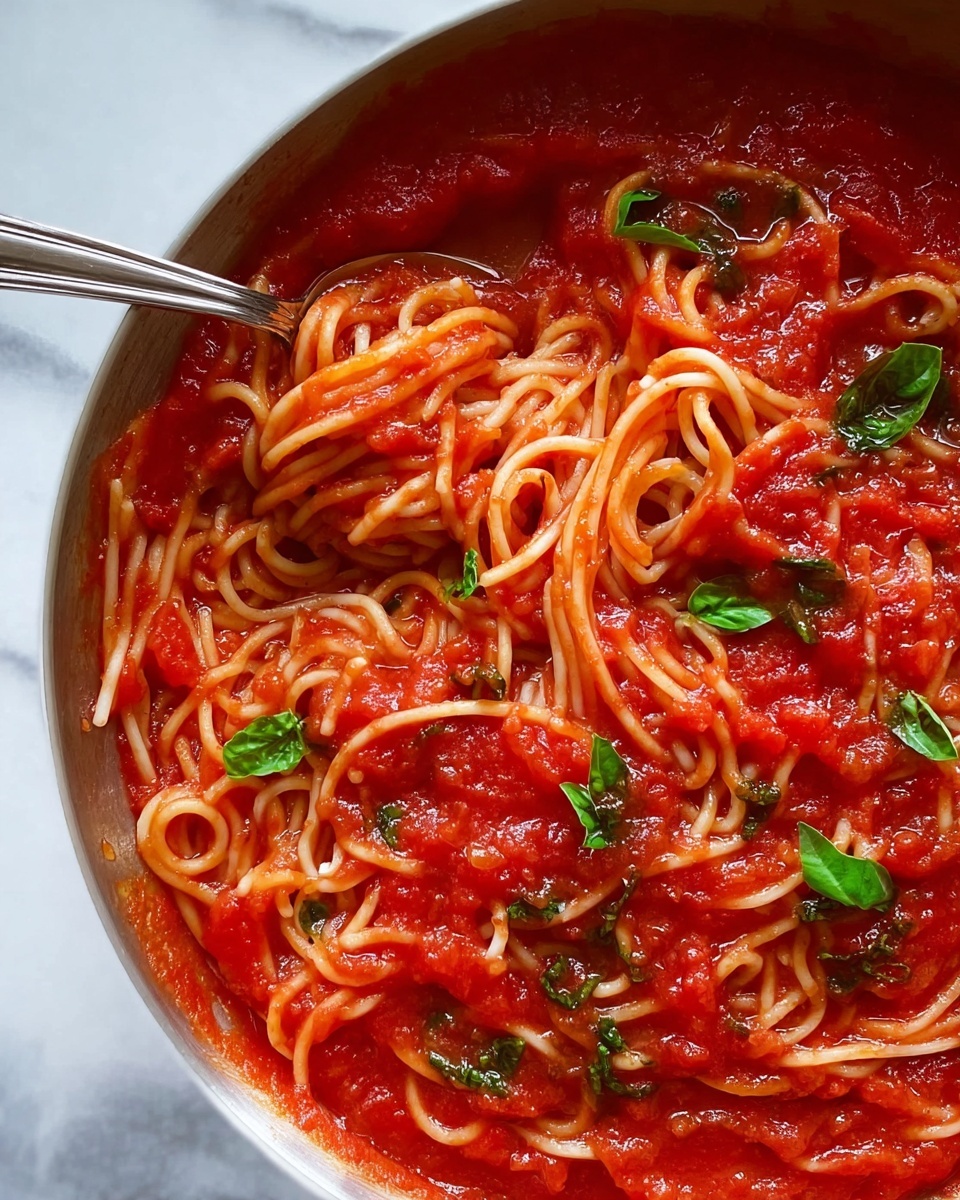
Garnishes
This sauce is a fantastic canvas for simple garnishes. Fresh basil leaves or a sprinkle of grated Parmesan cheese instantly add elegance and complexity. You might also try a drizzle of good olive oil or some toasted pine nuts for a delightful texture contrast.
Side Dishes
Serve this marinara sauce alongside a steaming bowl of spaghetti, on top of polenta, or as the perfect companion to crispy garlic bread. It also lends itself beautifully as a dipping sauce for mozzarella sticks or vegetable fritters. The possibilities are endless!
Creative Ways to Present
Think beyond traditional pasta for serving this sauce. Use it as a base for shakshuka, dollop it over grilled chicken or fish, or even bake it under melted cheese in a tomato-basil casserole. This Best Marinara Sauce Yet Recipe invites you to experiment and make it your own signature creation.
Make Ahead and Storage
Storing Leftovers
If you have any sauce left over, cool it completely and transfer it to an airtight container. It will keep beautifully in the refrigerator for up to 4 days, allowing you to enjoy its fresh flavors again without fuss.
Freezing
This sauce freezes like a dream. Portion it into small containers or freezer bags and freeze for up to 3 months. When you’re ready to enjoy it, thaw overnight in the refrigerator or gently warm it from frozen on the stove.
Reheating
Reheat over low to medium heat, stirring often to prevent sticking or burning. You might need to add a splash of water or olive oil to loosen the sauce if it has thickened too much. It tastes just as vibrant the second time around!
FAQs
Can I use fresh tomatoes instead of canned?
You absolutely can. If you choose fresh tomatoes, make sure they are ripe and juicy. Blanch, peel, and crush them before cooking. However, canned San Marzano tomatoes provide a consistent flavor that’s tough to beat and make this Best Marinara Sauce Yet Recipe incredibly reliable.
Is it necessary to add sugar to the sauce?
The teaspoon of sugar helps balance out the natural acidity of the tomatoes. While not mandatory, it creates a smoother, less sharp flavor. If you prefer a tangier sauce, you can reduce or omit the sugar according to taste.
What can I substitute for dried herbs if I only have fresh?
Fresh herbs are wonderful, but their flavor is more delicate. Use about three times the amount of fresh herbs in place of dried (for example, 3 tsp fresh oregano for 1 tsp dried). Add fresh herbs toward the end of cooking to preserve their brightness.
Can I make this sauce spicy?
Definitely! The recipe includes a small amount of chili flakes for gentle heat, but feel free to increase the amount or add fresh chili peppers. Just remember that spice levels can intensify after simmering, so add gradually and taste as you go.
How thick should the marinara sauce be?
Thickness is a personal preference. For pasta, a moderately thick sauce that clings well is ideal. You can simmer it longer to reduce and thicken it or add a little water if it gets too thick. This flexibility is part of what makes the Best Marinara Sauce Yet Recipe so versatile.
Final Thoughts
Making your own marinara sauce at home is such a rewarding experience, and this Best Marinara Sauce Yet Recipe gives you a surefire way to impress family and friends with minimal effort. The balance of fresh garlic, tomatoes, and herbs creates a sauce that feels both comforting and exciting. Give it a try—you might just find it becoming your go-to secret weapon for countless meals ahead.
Print
Best Marinara Sauce Yet Recipe
- Prep Time: 10 minutes
- Cook Time: 30 minutes
- Total Time: 40 minutes
- Yield: 4 servings
- Category: Sauce
- Method: Stovetop
- Cuisine: Italian
- Diet: Vegetarian
Description
This Best Marinara Sauce Yet is a rich, flavorful, and easy-to-make tomato sauce perfect for pasta, pizza, or any Italian-inspired dish. Made with simple ingredients like crushed tomatoes, garlic, and herbs, this sauce simmers to perfection, delivering a balanced taste with a hint of sweetness and herbaceous aroma.
Ingredients
Base Ingredients
- 2 tbsp olive oil
- 4 cloves garlic, minced
- 1 small onion, finely chopped
Tomato Ingredients
- 1 can (28 oz / 800g) crushed tomatoes (San Marzano if possible)
- 2 tbsp tomato paste
Seasonings
- 1 tsp sugar
- 1 tsp dried oregano
- 1/2 tsp dried basil
- 1/4 tsp chili flakes (optional)
- Black pepper to taste
Finishing
- Fresh basil (optional, for finish)
Instructions
- Heat the oil: Heat the olive oil in a pan over medium heat to create the perfect base for your sauce by gently warming the oil until shimmering.
- Sauté onions: Add the chopped onion and cook for 4-5 minutes until soft and translucent, releasing their natural sweetness and softening their texture.
- Add garlic: Stir in the minced garlic and cook for about 1 minute until fragrant, taking care not to burn it to avoid bitterness.
- Incorporate tomato paste: Add the tomato paste and cook for 1-2 minutes to deepen its flavor and caramelize the natural sugars, enhancing the sauce’s richness.
- Add crushed tomatoes: Pour in the crushed tomatoes and stir well to combine all the ingredients evenly.
- Season the sauce: Add sugar, dried oregano, dried basil, chili flakes (if using), and black pepper to balance acidity and add layers of flavor.
- Simmer the sauce: Let the sauce simmer uncovered for 20-30 minutes, stirring occasionally, until it thickens to your desired consistency, allowing flavors to meld beautifully.
- Adjust seasoning: Taste and adjust the seasoning as needed, adding more salt, pepper, or sugar if desired.
- Finish with fresh basil: Stir in fresh basil right at the end if available to add a fresh, aromatic touch to your marinara sauce.
Notes
- Use San Marzano tomatoes for a sweeter, less acidic sauce if possible.
- Simmering times can be adjusted depending on how thick you want your sauce.
- Fresh basil adds a brighter flavor but can be omitted or substituted with dried basil if unavailable.
- Chili flakes are optional and can be added for a subtle heat.
- This sauce pairs well with any pasta, pizza, or as a dipping sauce.



